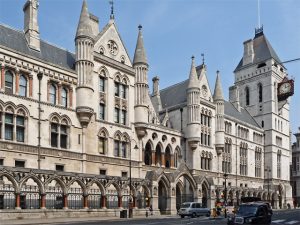All Rise (3)
The last two weeks of my internship went too quickly for my liking. I wanted to put all my research together in a decent report for Anna and Tom, and I wanted to enjoy being at the RCJ until I could. I really liked the office life, working intensively 9 till 5 or 6 and to then have the evening free. The first few days of my internship I actually tried going to university to do some more work afterwards, but I was, in the end, too mentally exhausted from the new and fascinating legal world to get actively back into the cerebellar one. I made a mental note to try and apply the same working hours once back at university. But I know that experiments don’t like a 9 till 5 schedule. Still, there’s hope this internship taught me something about getting things done efficiently and quickly.
Both Anna and Tom suggested I went into a courtroom during an actual trial. So, on Tuesday I went into the Criminal Division of the Court of Appeal. Every day the public can come and sit in a courtroom, you only need to check the daily cases https://www.justice.gov.uk/courts/court-lists/list-cause-rcj.
Now, I had many ideas of what the barrister and judges would look like during a trial, thanks to my experience at the students mock trials, but as I happened to choose appeal cases, it was all a little different. At appeal cases at the criminal court there are three judges, all wigged and robed up. As the case has already been sentenced, there is only the barrister for the appellant, all alone in front of the three judges. On the day I went there were 5 cases presented to the Court of Appeal.
Several things impressed me that morning. First, the soft tone that the barristers used to address the judges. Polite and firm, but with a touch of pleading. After all, they were arguing the reduction of a criminal sentence. Second, the ability of the judges to listen to the appeal, sum up the case, and wrap everything up quickly, in well-structured, logical sentences. It did not seem easy, the job of a judge. Third, the age of the second defendant, who appeared via videolink. He was in his early twenties, maybe younger than me. After the judges argued their point, announcing a reduction to the sentence, this young man brought his hands to his face and muttered a ‘thank you’, his voice seemingly broken by sobs. But what really impressed me was the final hearing. This man was being heard to apply for an appeal on his sentence. The surprising thing was that this applicant had no barrister. Just an average man, in his forties, standing there by himself, trying to argue his point. His appeal application was refused and the judges left the room as everyone else rose.
I got slightly glued onto my chair the last week, so Anna asked me to please go out and get some fresh air. I had been re-reading a lot of resources by that time, and I did feel like my eyes were about to pop out of their sockets. So I followed Anna’s suggestion I went for a stroll around the RCJ. Towards the end of summer, the building is almost empty. There are only a handful of trials and appeal cases going on. I started walking onto the stone floor, looking at the paintings of haughty-looking judges and expressionless marble busts on the side of the long corridors, where the ceilings are high and the windows are made of opaque glass criss-crossed with iron. I could swear I had been following signs to somewhere, but after 15 minutes of solid pacing, would you believe it, I found myself at the starting point. Frustrated at my ridiculous sense of orientation, I went back to the office. Anna was not surprised at my getting lost inside the RCJ. It is, apparently, very common. I imagined people disappearing for weeks, only to be found starving and mad one random day, begging for water and swearing their innocence. Thankfully, I knew where the office was.
My week was over and I frantically wrote up a few reports with my findings, as well as leaving all my notes typed and resources found in well organized folders. Anna and Tom got me a beautiful cake and some gorgeous flowers. On the last Friday Tom went over my reports, saying he was happy with my work there. Together with Lizzie, a new lovely addition to the London NCCL team, we went to have a farewell drink.
I was honestly sad to leave NCCL. The dreaded final year of my PhD awaited me. But, overall, this experience had been empowering. It proved to my neuroscience-tired brain that there are so many more interesting things out there to be learned and experienced. And that I have the skills and willpower to finish my PhD and go out there and conquer the world [insert evil laugh here]. No, seriously, it was great. If I could, I would do it all over again. And this time, I wouldn’t get lost. Probably.
